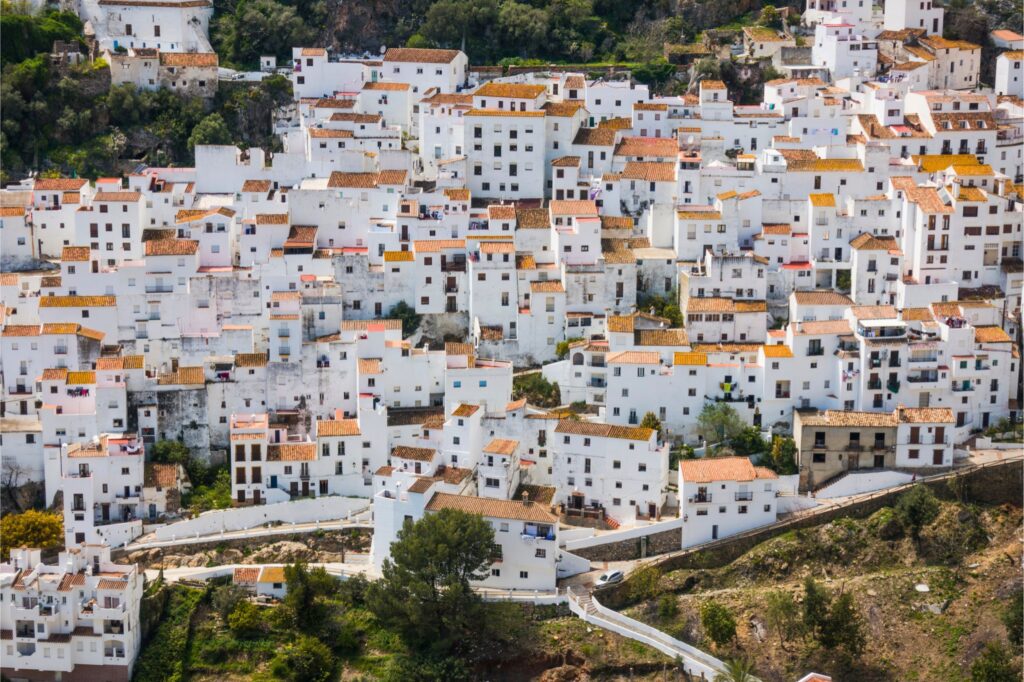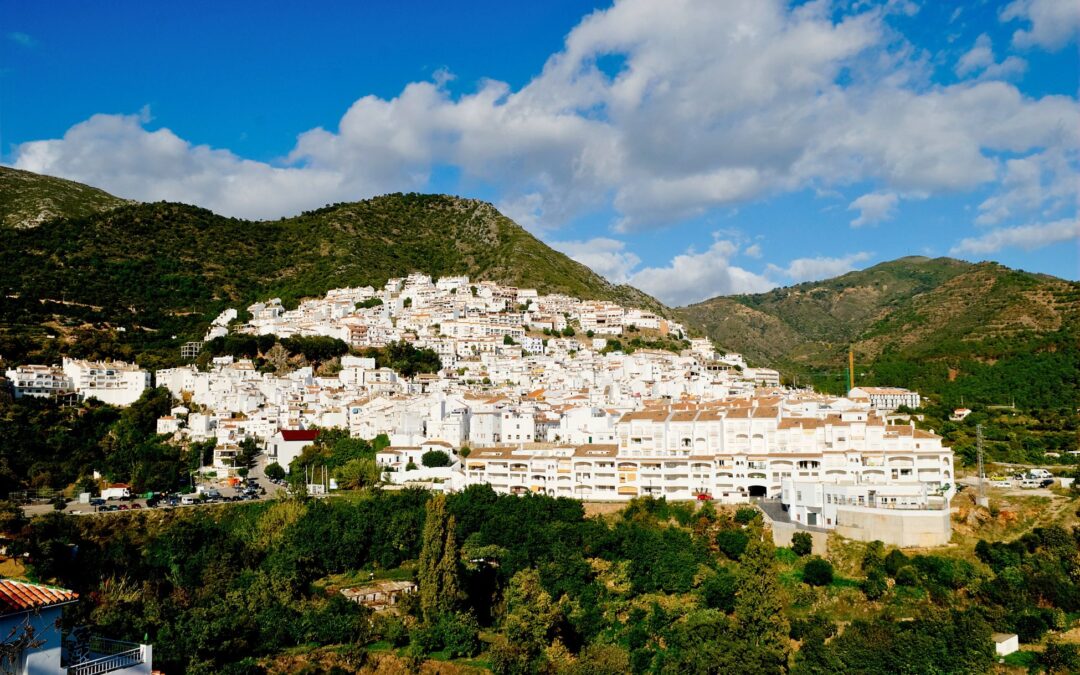Where the whitewashed walls remember, and so do we.
Mijas Pueblo has roots tracing back to the Turdetani, an Iberian tribe predating the Romans. That makes it one of the longest continuously inhabited hilltop settlements in Andalusia.
You don’t arrive in Mijas Pueblo accidentally. You take the time, wind your way up the road from the coast, past a few hairpin turns and quiet olive groves. And then, like something out of a well-thumbed paperback, it appears—perched on the side of the Sierra de Mijas, white and still against the slope. The kind of place where the houses wear flowers like earrings, and the air smells faintly of stone and citrus.
It’s tempting to call it picturesque. But that word doesn’t quite do justice to the feeling you get when you’re standing in its narrow streets, the world stretching out in layers below you: terracotta tiles, sea, sky. And between the cobbles and cool courtyards, the story of Mijas quietly unfolds—not in a museum behind glass, but in everyday life.
History You Can Walk Through
Before tourists, before tapas menus in six languages, there were people here with lives that felt just as ordinary to them as ours do to us. Bronze Age tools have been found in the hills around Mijas. The Romans came too, calling it “Tamisa,” building roads and trade networks. Then came the Moors, who left behind their curved arches and winding streets, and the name was reshaped again—this time into “Mijas.”
That’s how it is here. Layers. Not one big moment in time, but many. The Church of the Immaculate Conception, for example, started as a mosque. When the Moors left, the structure stayed. It’s now 500 years of history tucked into a square the size of a football pitch.
Then there’s the Hermitage of the Virgen de la Peña. Built into the rock. Small, still, and sincere. You walk in and the air changes. It’s not religious, necessarily—it’s just something older than noise. The kind of place you take a breath without realising.
A Place to Live, Not Just Visit
People often ask what it’s like to live here. And the answer isn’t about property specs or orientation. It’s about rhythm. In Mijas Pueblo, life moves differently. You wake up early because the sun insists. You walk to get coffee, because why wouldn’t you? You speak slower, because there’s no reason to rush.
And if you’re lucky—or if you choose well—you’ll have a home that fits into this rhythm. Some are old townhouses with uneven steps and blue-painted doors. Others are newer: minimalist villas that still manage to feel like they belong. Penthouses too, for those who like a view with their morning tea. But whatever your preference, it’s the setting that sells it.
You don’t move here for performance. You move here for presence.

The dramatic terraced hillsides were first engineered during Moorish rule in the 8th century, using a system of aqueducts and terraces to grow olives, grapes, and almonds—some of which remain productive today.
Culture as a Habit, Not an Event
In Mijas, culture isn’t scheduled—it’s ambient. It’s there in the sound of flamenco guitar echoing off the stones on a Sunday afternoon. In the local artist painting the same view he’s painted for twenty years, because it changes just enough with the light to make it new.
The village hosts concerts, yes. Art exhibitions. Wine tastings. But often the most meaningful experiences aren’t advertised. They’re incidental. They’re in the way a neighbour invites you to her niece’s birthday lunch. Or the old man who tells you, patiently, the same story about the bullring that he told you last year—and the year before.
And the food? Honest. Anchovies fried in a pan no one’s ever thought to replace. Tomato salad that tastes like sun. You can dine high-end if you want to—Mijas doesn’t lack for quality—but some of the best meals here still come from places without websites.
The Outdoors Is the Thing
What you don’t hear much about, but should, is the walking. Mijas is a walker’s town. Not just around the village itself, but into the hills that stretch behind it. The Sendero de la Sierra trails are there for those who want something longer than a stroll, something that reminds them of their body. Birdsong, bees, the soft snap of twigs underfoot. Up there, the Costa del Sol is something you look down on. And it looks different from that angle—smaller, quieter.
You don’t need hiking boots or a guide. Just decent shoes and time. And maybe someone to share the silence with.
Why Now? Why Here?
The truth is, Mijas isn’t for everyone. There are no nightclubs. No shopping centres. But for the right person, the one who’s done a few laps of London, who’s sat in too many meetings, who’s looking for mornings with meaning instead of appointments—it fits.
It works for retirees, yes. But also for writers, remote workers, couples with tired passports and fresh priorities. People who still want a nice kitchen, but also want to hear birds more than traffic. And who understand that old doesn’t mean outdated.
At ultimate-lifestyles.com, we’re not selling fantasy. We’re offering reality, in one of the few places that still respects it. We know the difference between a view that impresses and one that heals. Our listings in Mijas Pueblo are not just square footage. They’re part of something older. Something worth slowing down for.
📌 Curious about making Mijas Pueblo part of your next chapter?
Browse the latest homes at ultimate-lifestyles.com. Or talk to us about what kind of life you're ready to live.
📧 E-mail: [email protected]
📞 Phone: +34 951 12 07 12
Sometimes you don’t need a change of pace. You just need the right pace to begin with.

